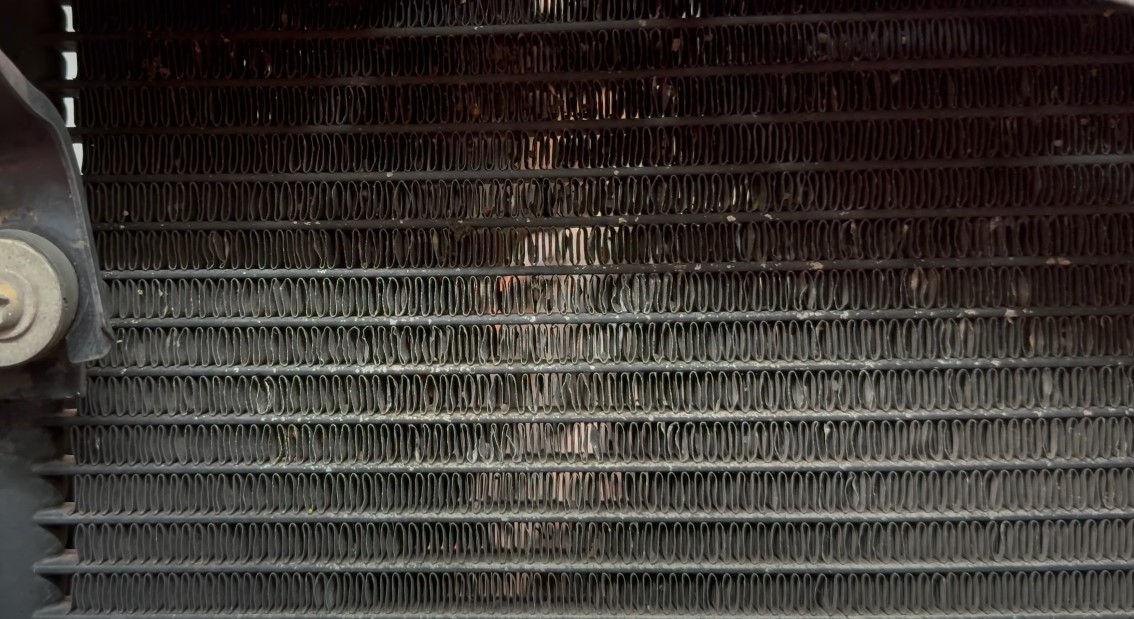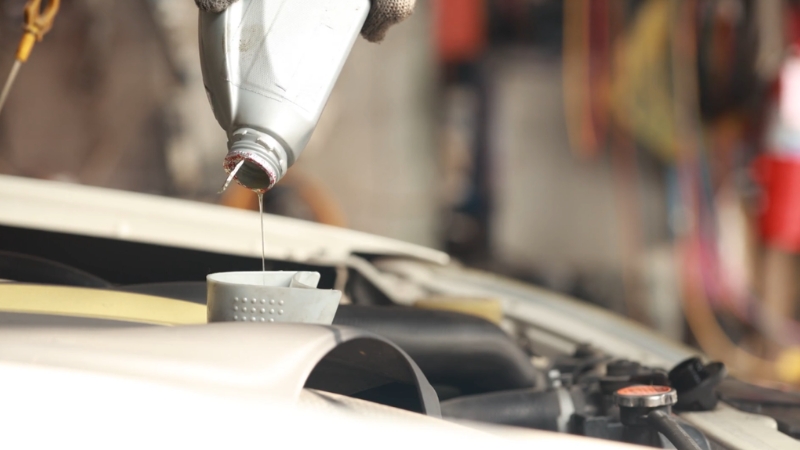
Share Post:
In the past, I’ve been stuck in bumper-to-bumper traffic, watching the temperature gauge creeping uncomfortably high, and feeling a knot in my stomach. Nobody wants engine trouble at a standstill, right?
I’ve done my fair share of research on what causes a stationary car to overheat, and I’m ready to share a breakdown of issues that might be behind it.
Below are the primary suspects, along with practical fixes I shared with some of my clients and friends that can help keep the temperature needle in a safe zone.
I hope my experience offers peace of mind and helps you handle that rising heat before it snowballs into something worse.
Table of Contents
ToggleA Quick Look
| Cause | Fix |
| Malfunctioning Radiator Fan | Inspect/replace fan, check wiring, and replace fuses. |
| Thermostat Failure | Replace thermostat with a high-quality one. |
| Low Coolant Levels | Refill coolant, trace and repair leaks. |
| Blocked/Dirty Radiator | Clean external debris, flush for internal clogs. |
| Water Pump Failure | Replace water pump and timing belt if necessary. |
| Damaged/Leaking Hoses | Replace faulty hoses and use quality clamps. |
| Air in Cooling System | Bleed air using bleed screws or vacuum tool. |
| Faulty Temperature Sensor | Replace sensor and confirm fan operation. |
| Clogged Heater Core | Flush heater core or replace if flushing fails. |
| Fan Relay/Module Problems | Test/replace relay/module, check connections. |
1. Malfunctioning Radiator Fan

Cause
The radiator fan plays a critical role by drawing cool air across the radiator when the vehicle isn’t in motion. Without airflow, engine temperature spikes at idle.
Over time, the fan motor or related electrical components can fail, leaving no air circulation to regulate heat buildup.
Symptoms
I’ve spotted a temperature gauge creeping upward while stationary, and that’s a giveaway. Another clear sign involves looking under the hood and noticing the fan not spinning when the engine gets hot.
Fix
It’s essential to inspect the fan motor, wiring, and any associated fuses. A blown fuse can often be swapped out with minimal hassle.
In some cases, the fan motor itself is worn, so a replacement might be necessary. Making sure power is reaching the fan motor is a good step, too, because a wiring issue may mimic a bad fan.
2. Thermostat Failure
Cause
The thermostat allows coolant to flow between the engine and radiator at the proper temperature. If it becomes jammed, coolant remains trapped in the engine block, which encourages quick overheating at a standstill.
Symptoms
I’ve encountered sudden surges on the temperature gauge, plus leaks around the thermostat housing that hint at a stuck or failing unit.
Fix
Replacement is straightforward and typically inexpensive. I’ve found it helpful to choose a high-quality thermostat rather than the cheapest option.
3. Low Coolant Levels

Cause
Coolant wicks away heat from the engine. When levels dip below the recommended range, the system’s efficiency drops. That deficiency is especially noticeable when the engine isn’t getting external airflow while sitting still.
Symptoms
I’ve smelled a sweet odor around the engine when coolant is leaking. Sometimes, there are visible puddles or a slow drip.
Bubbles in the coolant reservoir can also suggest that the system is low or contaminated with air.
Fix
It’s usually easy to top up the coolant at home. I make sure to use the type recommended by my car’s manufacturer. It’s also vital to trace any leaks in hoses or the radiator.
A quick top-up is only a band-aid if there’s a larger leak at play.
4. Blocked or Dirty Radiator
Cause
Accumulated dirt, bugs, and debris can clog the radiator’s fins, while internal deposits can block coolant passages. Both external and internal blockages prevent effective heat exchange.
Symptoms
I’ve noticed quicker increases in engine temperature during city driving. A good hint is restricted airflow visible through the grille area. Sometimes you can see leaves or dirt caked on the front of the radiator.
Fix
I use gentle water pressure or compressed air to clear off external debris. Be cautious with pressure washers, as fins can bend easily.
For more severe blockage inside the radiator, a professional flush is often the best approach. It’s wise to keep an eye on coolant color because it can reveal signs of rust or deposits that indicate an internal clog.
5. Water Pump Failure

Cause
The water pump circulates coolant throughout the engine. A failing pump can stop effective coolant flow, leading to heat accumulation, which is especially noticeable while idling.
Symptoms
I’ve seen leaks from the front of the engine bay, often around the pump’s weep hole. A grinding or whining sound can also come from a failing bearing in the pump.
Fix
Replacing the water pump typically involves addressing the timing belt as well because they’re often accessed together. It’s a labor-intensive repair in some engines.
Still, putting in a fresh water pump is crucial for keeping coolant in motion. If I’m going to the trouble of changing a pump, I usually go ahead and install a new belt to avoid future overlap in labor.
6. Damaged or Leaking Hoses
Cause
Old hoses become brittle, crack, or develop pinhole leaks. That causes coolant loss and air intrusion. When fluid leaks out, the engine can’t cool properly at lower speeds or at idle.
Symptoms
I’ve seen obvious puddles under the car after parking. Hoses with bulges, cracks, or dried-out textures are warning signs that can’t be ignored.
Fix
It’s wise to replace faulty hoses with ones that meet or exceed manufacturer specifications. It’s also a good idea to use quality clamps.
7. Air in the Cooling System
Cause
Air pockets form from poor coolant refills or leaks. Pockets block circulation, especially at slower speeds, where the engine relies on a constant coolant loop.
Symptoms
I’ve heard gurgling sounds in the coolant reservoir, and the temperature gauge sometimes jumps erratically. That suggests trapped air is floating around the system.
Fix
Bleeding the system is often the solution. Many vehicles have a dedicated bleed screw, which is a convenient way to let out trapped air.
Some people use a vacuum tool for a more efficient refill. After the bleed process, let the engine idle and watch for any fluctuations in temperature.
8. Faulty Temperature Sensor
Cause
The sensor relays engine temperature data to the ECU. If it’s giving inaccurate readings, the radiator fan might not kick on, creating a real overheating problem.
Symptoms
There could be strange readings on the gauge or an absence of fan operation even when the engine is clearly overheating. I once replaced a fan motor, only to discover a flawed sensor was the true culprit.
Fix
Swap the faulty sensor for a fresh one. Locating it can vary, so consulting the vehicle’s manual or a reliable online guide is helpful. Once replaced, I make sure the fan activates at the right temperature to confirm the repair.
9. Clogged Heater Core

Cause
The heater core helps warm the cabin and also circulates coolant. If it’s clogged with sediment or rust, coolant flow is restricted. Idle conditions then amplify that restriction, as airflow is already reduced.
Symptoms
I’ve found it suspicious when the heater blows cold air in winter, or there’s a faint coolant smell inside the cabin. Overheating can be a hidden side effect, especially in stop-and-go traffic.
Fix
Some prefer a flush approach. An automotive shop might reverse-flush the heater core to remove buildup. If flushing fails, a replacement becomes necessary. I always test the cabin’s heater function afterward to ensure the fix worked.
10. Cooling Fan Relay or Module Problems
Cause
Electrical components like the fan relay or control module are responsible for powering the fan at certain temperatures. When that link breaks down, the fan stays off at idle, and temperatures climb.
Symptoms
I’ve seen cases where the fan sits motionless, even when the engine is scorching hot. Sometimes the fan runs sporadically, hinting at intermittent relay or module issues.
Fix
Testing the relay for continuity with a multimeter can reveal problems. If the relay is shot, it’s usually a cheap fix. For a broken control module, a direct replacement might be necessary.
Double-checking all connections is important to prevent future shorts or loose connections that create the same overheating woes.
Preventative Maintenance Tips
A few steps can go a long way in preventing temperature spikes:
Monitor Coolant Levels Regularly
I make a habit of glancing at the overflow reservoir at least once a month. The earlier I notice a drop, the faster I can track down a leak.
Flush the System
Scheduling a system flush every couple of years is a small investment compared to the price of a new radiator or engine repairs. A mechanic can remove old coolant, along with rust and debris.
Inspect Components Routinely
Hoses, the radiator, and the fan blades should be examined now and again. I’ve spotted tiny cracks on hoses before they turned into bigger problems. A little vigilance saves a ton of hassle.
Keep an Eye on the Temperature Gauge
If the needle climbs beyond the normal range, shutting off the engine and seeking help may prevent serious damage. Overheating can harm gaskets and other expensive parts.
Consult a Professional if Needed
I’m a big fan of DIY solutions, but certain repairs, like replacing a radiator or diagnosing intermittent electrical problems, might need trained expertise. It’s far safer to get professional input for issues that linger.
Final Thoughts
A car that grows too hot in bumper-to-bumper traffic is stressful, but there’s light at the end of the tunnel. I’ve endured that anxious feeling, but each time, learning about root causes and applying the right fixes has helped me keep the situation under control.
Small preventative measures, from topping off coolant to keeping fan components healthy, can save money and headaches down the road.
If major issues don’t go away after basic checks, a trusted mechanic’s knowledge may be the best route to prevent bigger engine damage.
May your gauge stay steady, your drives remain smooth, and your idle time be free of unwanted heat. Safe travels!
Related Posts:
- Think Google Can Fix Your Car? Here’s Why You’re…
- Normal Oil Pressure At Idle - What’s Safe and What…
- Chronic Electrical Problems in Your Vehicle - Fix or Sell?
- Car Clicking But Won’t Start? Common Causes and How…
- Car Leaking Oil? Here's What You Need to Know and…
- Trac Off Light - What It Means and How to Fix It







